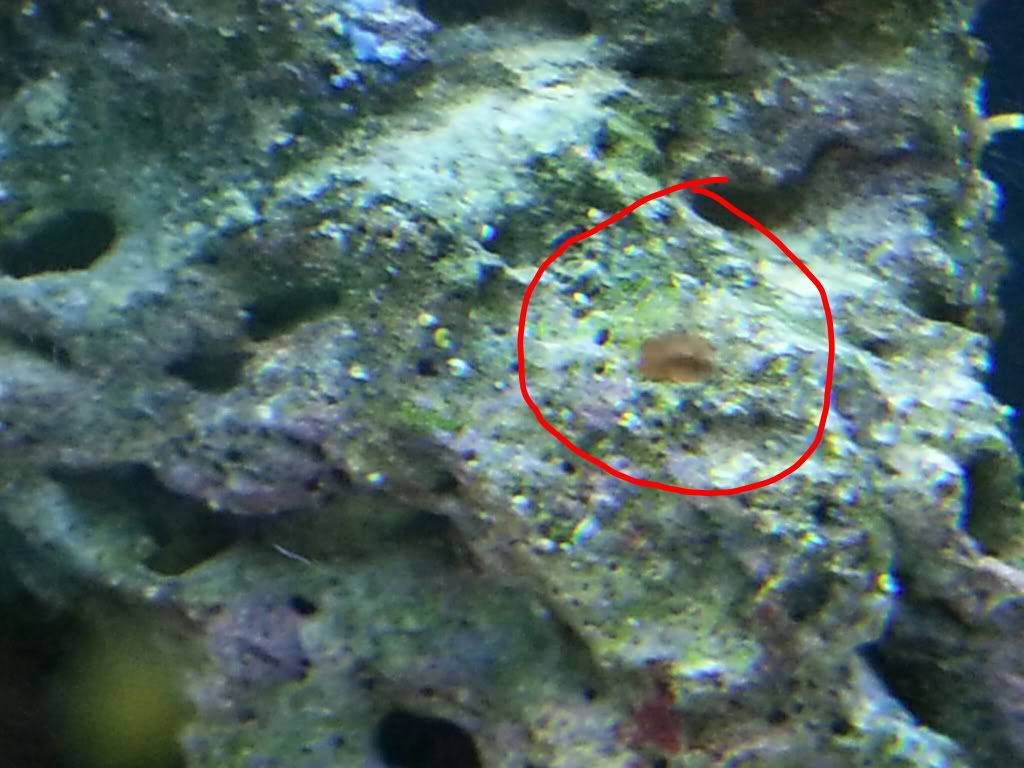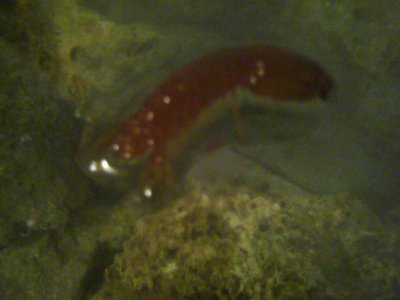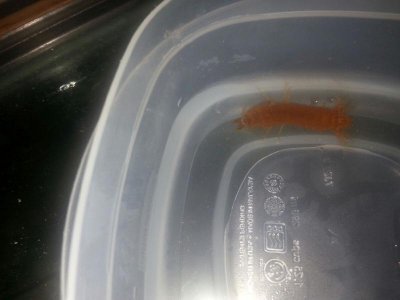You are using an out of date browser. It may not display this or other websites correctly.
You should upgrade or use an alternative browser.
You should upgrade or use an alternative browser.
Pix & ID: Critters that come in your rocks: the good and the bad.
- Thread starter Sk8r
- Start date
alexander_ktn
New member
It's a small mantis shrimp.
ReeferKimberly
Marley & Me
Yes it is and if I didn't live 8 hours above you I would want it so bad!
Bck2hobby
Member
Thanks for the ID guys much appreciated. I thought it was at first, but didnt see it's claws. Hmmm I can already hear my wife, another tank for 1 shrimp :debi: . Eegads now have to mcgyver a section of current tank to keep him away from rest of tank. So far had not bothered anyone in there.
GroktheCube
New member
I've got a really weird one. A two toned, RAPIDLY swimming polychaete of some sort. When I first saw it in the tank, I thought it was a small fish. I have never see a worm swim this fast in my life. I have NO idea where it came from. I don't want to put it back into the tank until I know what it is, because a worm that swims that fast screams predator to me, but I'm worried it will swim itself to death in this cup.
Video:

Pictures:









Anyone have any ideas? I poked around on the internet a bit, and couldn't find anything.
Video:

Pictures:









Anyone have any ideas? I poked around on the internet a bit, and couldn't find anything.
ReeferKimberly
Marley & Me
Epitoke maybe? It is a swimming stage of stuff, part of their reproduction...I think bristleworms included. I know others will know more than me about it though.
"Within a group of polychaetes, the syllids, the rear (backside) section of the worms is customized to transport either ova or semen. This epitoke at some point breaks away from the primary section of the worm, and swims towards the surface to recreate. As soon as the ova are fertilized, female epitokes carry the embryos in sacs on their abdomens until eventually they hatch. The rest of the benthic worm is termed an atoke, and may carry on feeding and growing, ultimately producing new epitokes. Syllid epitokes form astounding swarms of reproductive individuals at the surface waters. This fascinating conduct is considered to be controlled via the lunar cycle, having a peak close to the full moon.A different variation is observed in some of the tropical eunicids, where the anterior portion of the worm is filled with gametes and then breaks off. It then swims up to the surface when the ova or semen is released. This in turn leaves a portion of the adult still alive (the atoke) in the rock to repeat the process again. These are in fact true epitokes."
"Within a group of polychaetes, the syllids, the rear (backside) section of the worms is customized to transport either ova or semen. This epitoke at some point breaks away from the primary section of the worm, and swims towards the surface to recreate. As soon as the ova are fertilized, female epitokes carry the embryos in sacs on their abdomens until eventually they hatch. The rest of the benthic worm is termed an atoke, and may carry on feeding and growing, ultimately producing new epitokes. Syllid epitokes form astounding swarms of reproductive individuals at the surface waters. This fascinating conduct is considered to be controlled via the lunar cycle, having a peak close to the full moon.A different variation is observed in some of the tropical eunicids, where the anterior portion of the worm is filled with gametes and then breaks off. It then swims up to the surface when the ova or semen is released. This in turn leaves a portion of the adult still alive (the atoke) in the rock to repeat the process again. These are in fact true epitokes."
GroktheCube
New member
Maybe. I always thought of those as being more stringy and swimming a bit more slowly and awkwardly. This guy is just ridiculously fast. You're probably right though.
ReeferKimberly
Marley & Me
They are so neat! But I have no idea about like what worms do it and what don't and if yours is harmful or not. Just a particular stage. Always neat when these things happen in our tanks
GroktheCube
New member
Yep. That's exactly what mine was doing in the tank. I've done some more reading, and I'm PRETTY sure it's a Nereid epitoke. Gonna toss it back in the drink. On the off chance it's something bad, the firefish will be going into the tank in two weeks, and hopefully they chow down 
alexander_ktn
New member
You can feed it with mysis or similar food and put some live rock/rubble in the container if you haven't already.
bloodypeasant
New member
Okay, I've got a small, flat, round guy roaming around my tank. First noticed it on my sympodium (the coral was retracted) and this brown spot was on it. Got me worried. I came back a few hours later and the brown disc moved off of the coral and onto my rock. Moves about as fast as a starfish (inch an hour) but has no noticable legs or appendages, its perfectly round. Was somewhat concerned since I saw it on the sympodium. Any ideas?


cloak
New member
My guess would be a flatworm of some sort. Usually not good.
http://www.reefkeeping.com/joomla/i...latworms-and-other-bugs-that-make-you-see-red
http://www.reefkeeping.com/joomla/i...latworms-and-other-bugs-that-make-you-see-red
hogfanreefer
Active member
Found this guy today while on an aiptasia hunt. Hard on the top, soft on the bottom. About 1/2" at his longest dimension.
Top

Bottom

Top

Bottom

hogfanreefer
Active member
Thanks Sushi!
Similar threads
- Replies
- 9
- Views
- 804


